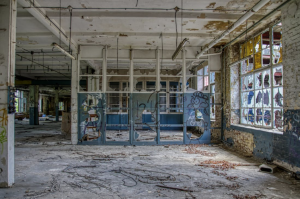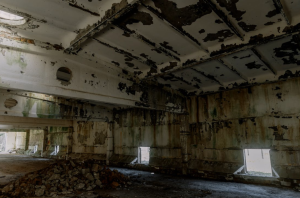Go to Page Section:
- Understanding Popcorn Ceilings
- The Hidden Dangers of Asbestos
- Identifying Asbestos in Your Ceiling
- Health Risks Associated With Asbestos
- Professional vs. DIY Asbestos Removal
- Safe Practices for Asbestos Handling
- Legal Considerations and Asbestos
- Upgrading From Popcorn Ceilings
- Frequently Asked Questions
- How Long Does the Process of Popcorn Ceiling Removal Typically Take?
- Are There Any Insurance Implications When Removing Asbestos From a Popcorn Ceiling?
- Are There Alternative Materials to Use Instead of Asbestos for Popcorn Ceilings?
- Can I Stay in My Home During the Process of Asbestos Removal?
- Will Removing My Popcorn Ceiling Significantly Increase the Value of My Home?
The aesthetic appeal of popcorn ceilings, a popular design choice in the mid-20th century, often overshadows the potential health risks they present.
One such risk is the presence of asbestos, a harmful substance widely used in construction until the 1980s due to its heat resistance and insulating properties.

Disturbing asbestos-laden materials can inadvertently release harmful fibers into the air, leading to serious, even fatal, health complications over time.
While the prospect of addressing asbestos may seem intimidating, understanding the associated risks and taking appropriate safety measures can mitigate potential hazards.
Join us as we explore this pertinent issue further.
Understanding Popcorn Ceilings
If you own a home built between the 1950s and 1980s, you may be familiar with popcorn ceilings.
This architectural trend was popular during the mid-20th century and is characterized by its distinctive, bumpy texture, resembling popcorn, hence the name.
Popcorn ceilings were typically made from a mixture of materials, including Styrofoam or stucco, and sprayed onto the ceiling.
The popcorn ceiling materials were chosen because they can deaden sound, hide imperfections, and are inexpensive and quick to finish.
The popcorn ceiling history is intertwined with shifts in architectural aesthetics and practical considerations.
Originally, these ceilings were considered a cost-effective, efficient way to cover up imperfections, such as cracks or uneven surfaces.
Popcorn ceilings also offered advantages regarding reducing noise levels, as the rough texture could absorb and dampen sounds.
However, as design trends evolved, popcorn ceilings fell out of favor.
They became associated with outdated design and the difficulty of their removal became a disadvantage.
Understanding the materials and history of popcorn ceilings is important for homeowners, especially when considering home improvements or renovations.
As we continue our exploration of safety tips for homeowners, we now turn our attention to the hidden dangers of asbestos.
The risks associated with asbestos are often underestimated, yet they pose a significant health threat in many homes.
In the following discussion, we will address these risks and explore the potential consequences of asbestos exposure.
Understanding Asbestos Risks
Countless homeowners are unaware of the hidden dangers that lurk within their homes, one of the most perilous being asbestos.
This naturally occurring mineral, once popular for its heat resistance and insulating properties, poses significant health risks when its fibers are released into the air.
Asbestos was widely used in construction materials such as ceiling tiles, roofing, and insulation before the 1980s.
Consequently, if your home was built during this period, asbestos may likely be present.
One common use was in popcorn ceilings, a textured finish popular during the mid-20th century.
A ceiling renovation in such homes could potentially release asbestos fibers into the air, posing a threat to the inhabitants.
Understanding asbestos regulations is critical for homeowners planning renovations.
The Environmental Protection Agency (EPA) has set strict guidelines on handling materials containing asbestos.
In some states, only licensed professionals are allowed to remove asbestos-containing materials.
While asbestos within your home does not always pose an immediate threat, it becomes hazardous when disturbed.
Consequently, before you set out on any renovation, it is essential to have your home inspected for asbestos.
If detected, it should be handled carefully and professionally to minimize risks.
Asbestos Exposure Consequences
The potential presence of asbestos in homes, especially those built before the 1980s, is an unsettling fact that homeowners must grapple with.
The consequences of asbestos exposure can be severe, and understanding these risks is essential for maintaining a safe living environment.
Asbestos was widely used in construction due to its fire-resistant and insulating properties.
However, asbestos regulations have evolved as understanding of its health risks has expanded.
Inhalation of asbestos fibers can lead to serious diseases such as asbestosis, lung cancer, and mesothelioma.
These diseases often manifest decades after exposure, making early detection difficult.
Exposure symptoms include persistent coughing, chest pain, shortness of breath, and weight loss.
If you experience these symptoms and suspect you may have been exposed to asbestos, consult a healthcare professional immediately.
It is also advised to conduct an asbestos inspection if your home was built before the 1980s or if you plan to renovate a property of this age.
Identifying Asbestos in Your Ceiling
Detecting asbestos in your ceiling can be a challenging task, but it’s vital for maintaining a safe living environment.
Despite its potential difficulty, it’s a necessary step to guarantee that you and your family are not being exposed to harmful asbestos fibers.
Asbestos was commonly used in various ceiling types, particularly popcorn ceilings, due to its heat resistance, durability, and sound absorption qualities.
If your home was built before the 1980s, there’s a higher chance your ceiling could contain asbestos.
Professional asbestos testing is important as it’s challenging for homeowners to identify asbestos just by looking.
Additionally, disturbing asbestos-containing materials can release dangerous fibers into the air.
For guidance on managing popcorn ceilings with asbestos risks, qualified professionals collect samples without creating unnecessary risks, and then send them to a lab for testing.
The process may involve slightly damaging the ceiling, so it’s imperative to leave this task to professionals.
Amateur attempts could not only fail to accurately identify asbestos but also potentially release the harmful fibers.
Health Risks Associated With Asbestos
Understanding the presence of asbestos in your home is just the first step; recognizing the health risks associated with asbestos exposure is equally important.
When asbestos fibers are inhaled, they can get trapped in the lungs and remain there for a long time.
Over time, these fibers can accumulate, leading to significant health problems.
According to asbestos regulations, homeowners must be aware of the potential risks.
The most common diseases associated with long-term asbestos exposure are asbestosis, lung cancer, and mesothelioma.
Asbestosis is a chronic lung disease characterized by scarring in the lungs’ tiny air sacs.
The scar tissue impedes oxygen flow, making breathing difficult.
Lung cancer from asbestos exposure often manifests decades later, and its symptoms are similar to other types of lung cancer.
Mesothelioma is a rare form of cancer that affects the lining of the lungs, chest cavity, or abdomen.
Regular health screenings are vital for early detection of these diseases.
If you live in a home with asbestos, it is recommended to get regular check-ups, including chest X-rays and pulmonary function tests.
These measures can help detect any asbestos-related health issues in their early stages, maximizing treatment options and prognosis.
Professional vs. DIY Asbestos Removal
As we continue our discussion on safety tips for homeowners, the topic of asbestos removal merits careful attention.
The decision to undertake this task personally or to enlist the services of professionals can greatly impact both health and financial aspects.
Over the next few sections, we will explore the potential risks associated with DIY removal and the benefits of hiring professional asbestos removal services.

Risks of DIY Removal
One might be tempted to undertake the task of asbestos removal by themselves, believing it to be a cost-effective solution.
However, the reality is far from this perception, with numerous risks associated with DIY removal techniques.
Asbestos, a carcinogenic material, is dangerous if not handled correctly, hence necessitating expertise and technical knowledge for safe removal.
The primary risk is the release of asbestos fibers into the air, which can be easily inhaled.
This poses severe health risks, including lung cancer and mesothelioma.
In addition, inadequate removal can leave residual asbestos, which continues to pose a threat to occupants.
As for cost implications, DIY removal might seem cheaper initially.
However, considering the potential for health issues and the cost of protective equipment, the financial burden could be substantially higher in the long run.
Moreover, legally, asbestos waste must be disposed of in designated facilities.
Non-compliance can result in hefty fines, adding to the cost.
Lastly, DIY removal techniques may cause damage to your property.
Professional services, conversely, guarantee minimal damage while guaranteeing your home is asbestos-free.
Thus, despite the initial cost, professional asbestos removal is worth considering for the safety and long-term financial savings it guarantees.
Hiring Professional Services
Given the numerous risks associated with DIY asbestos removal, hiring professional services is a prudent choice for homeowners.
Experts in the field have the necessary equipment, training, and experience to safely and effectively remove asbestos from popcorn ceilings.
While there may be cost considerations when hiring professionals, remember that the potential health risks and potential property damage costs from DIY mistakes can far outweigh these initial expenses.
Selecting contractors should be done with care.
It’s important to choose a company that specializes in asbestos abatement, as they will be up to date on the latest safety regulations and removal techniques.
They should also be licensed and insured to protect homeowners from liability.
Before signing a contract, homeowners should request a written estimate, detailing the work to be done and the costs involved.
They should also ask for references and check online reviews to guarantee they are hiring a reputable company.
Safe Practices for Asbestos Handling
In handling asbestos, safety is paramount due to the serious health risks associated with exposure to these hazardous fibers.
As homeowners, understanding the safe practices for asbestos handling is essential, especially when dealing with popcorn ceilings that may contain these materials.
The first step involves asbestos containment.
This process restricts the fibers from becoming airborne and spreading throughout the home during removal.
Asbestos containment is commonly achieved through the use of plastic sheeting and duct tape to seal off the work area.
In addition, negative air pressure units can be used to prevent the spread of fibers to other parts of the home.
Safety equipment is an essential part of asbestos handling.
Homeowners should wear respirators specifically designed for asbestos exposure, and not just ordinary dust masks.
Other necessary safety equipment includes disposable coveralls, rubber gloves, and protective eyewear.
It is important to wet the asbestos-containing material before disturbance.
This reduces the release of asbestos fibers.
All removed material should then be placed in leak-tight containers for proper disposal.
Legal Considerations and Asbestos
While safety practices are the first line of defense in handling asbestos, homeowners must also be aware of the legal implications associated with this hazardous material.
Asbestos regulations, established by agencies such as the Environmental Protection Agency (EPA) and Occupational Safety and Health Administration (OSHA), dictate specific guidelines on how asbestos should be handled, removed, and disposed of.
Non-compliance with these regulations can result in hefty fines or legal sanctions.
Homeowners need to be cognizant of the potential legal liability associated with asbestos presence in their homes.
If asbestos is improperly handled, leading to the exposure and subsequent health issues of others, homeowners could be held legally accountable.
This can be particularly pertinent if you decide to sell your home.
Full disclosure of asbestos presence is a legal requirement in many jurisdictions.
Failure to disclose this information may lead to lawsuits from future homeowners.
Upgrading From Popcorn Ceilings
Many homeowners are now looking to upgrade from traditional popcorn ceilings, a trend that gained popularity in the mid-to-late 20th century due to its easy application and sound-dampening qualities.
However, more contemporary renovation trends are moving away from this style, favoring smoother, more aesthetically pleasing ceiling textures.
Upgrading from a popcorn ceiling is not just about following the latest renovation trends.
It is also about creating a healthier living environment.
Many older popcorn ceilings contain asbestos, a harmful and potentially carcinogenic material.
Upgrading the ceiling can, as a result, contribute considerably to the overall safety of your home.
There are various ceiling textures to choose from when upgrading, including knockdown, skip trowel, and smooth finishes.
These modern ceiling textures can give your home a fresher, updated look, and increase its resale value.
However, the process of removal and replacement can be messy and time-consuming.
It is recommended to hire a professional to guarantee a safe and efficient renovation.
All in all, upgrading from a popcorn ceiling is a trend that not only enhances the visual appeal of your home but also contributes to a safer living environment.
Frequently Asked Questions
How Long Does the Process of Popcorn Ceiling Removal Typically Take?
The duration of popcorn ceiling removal depends on the project’s size and complexity.
However, using standard removal techniques, the process typically takes between one to three days for an average-sized room.
Are There Any Insurance Implications When Removing Asbestos From a Popcorn Ceiling?
Yes, insurance implications do exist.
Policies may not cover asbestos removal costs due to its inherent risks.
Homeowners should consult their providers to understand coverage limits and potential liabilities associated with popcorn ceiling asbestos removal.
Are There Alternative Materials to Use Instead of Asbestos for Popcorn Ceilings?
Indeed, there are safer, non-toxic alternatives for popcorn ceiling texture.
Materials like Styrofoam, cotton, and cellulose present healthier choices.
They’re as easy as pie to install and imitate the classic texture effectively without the asbestos risk.
Can I Stay in My Home During the Process of Asbestos Removal?
Yes, you can stay in your home during asbestos removal, provided safety precautions are strictly followed to limit asbestos exposure.
However, it is often recommended to vacate the premises until clearance is given.
Will Removing My Popcorn Ceiling Significantly Increase the Value of My Home?
Removing a popcorn ceiling can potentially increase your home’s value.
The aesthetic appeal and modern look resulting from the removal may attract more buyers, thereby potentially leading to a higher selling price.


Leave a Reply